Posts Tagged: Verbena
Victory in the Verbena
Yes, I'm hungry. A female praying mantis is perched upside down in our pollinator garden. She has maintained this position in the verbena over a...
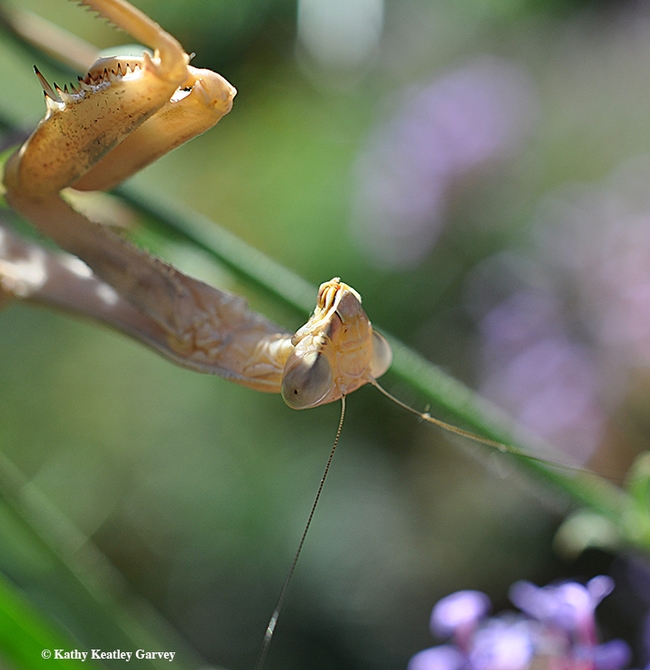
A female praying mantis, a Stagmomantis limbata (as identified by Lohit Garikipati of UC Davis) is looking for prey. (Photo by Kathy Keatley Garvey)
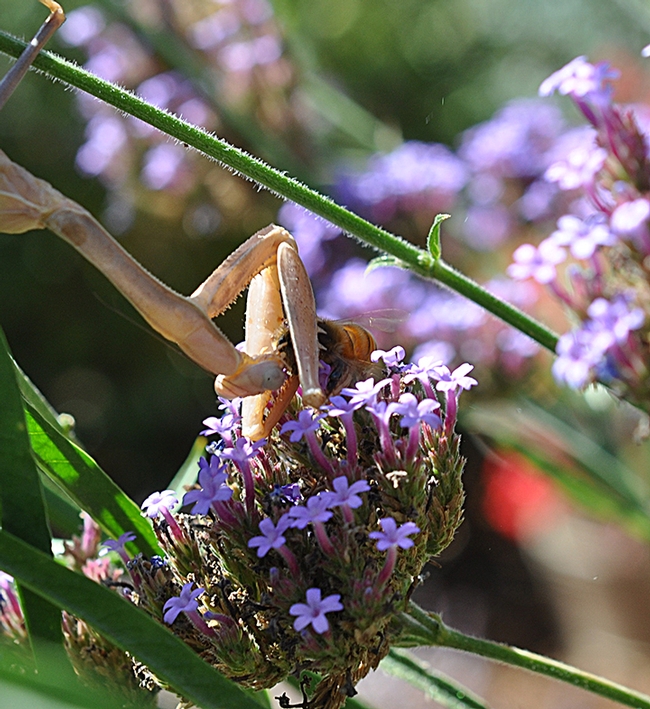
Seconds later, the praying mantis nails a honey bee. (Photo by Kathy Keatley Garvey)
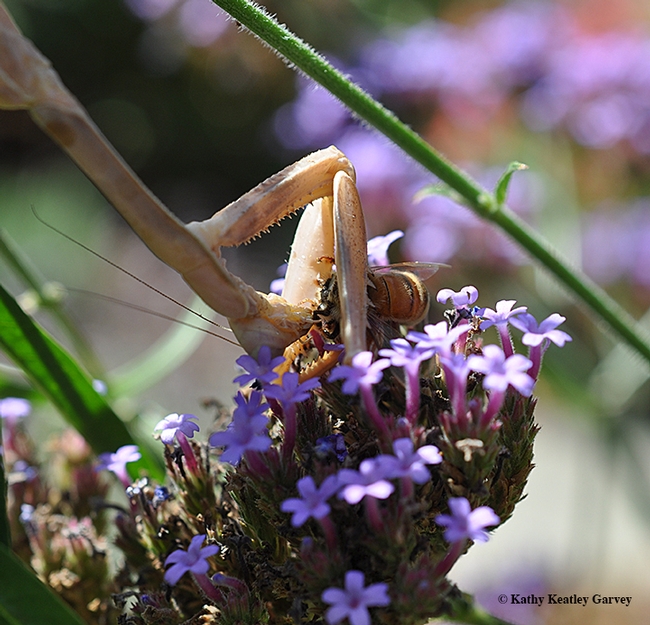
The praying mantis, Stagmomantis limbata, begins to eat. (Photo by Kathy Keatley Garvey)
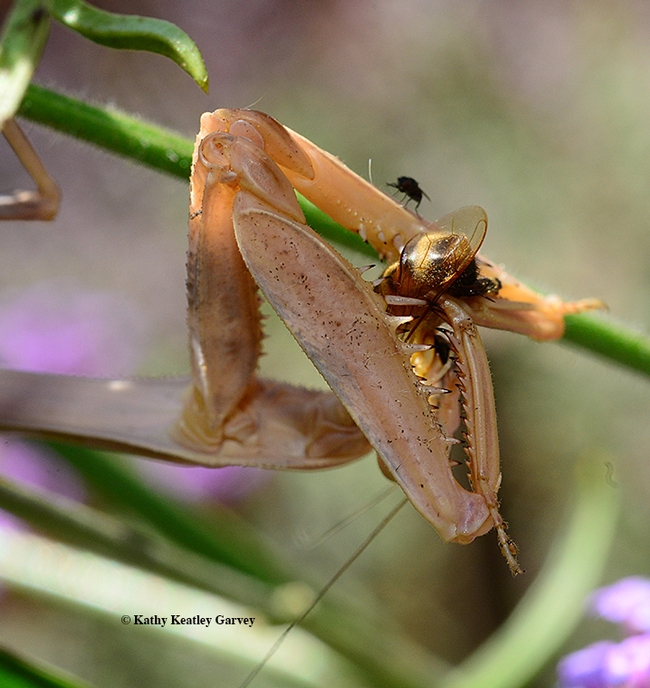
A freeloader fly, (family Milichiidae and probably genus Desmometopa) perches on a spiked foreleg. (Photo by Kathy Keatley Garvey)
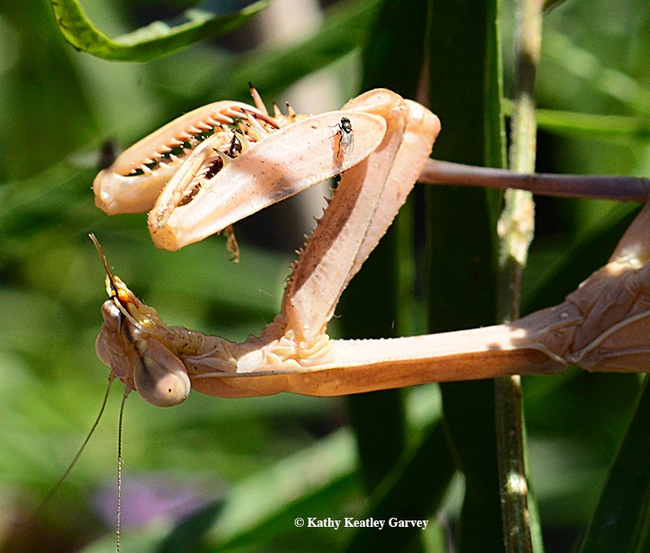
The praying mantis eats the last of her prey, while the freeloader fly is out of luck. (Photo by Kathy Keatley Garvey)
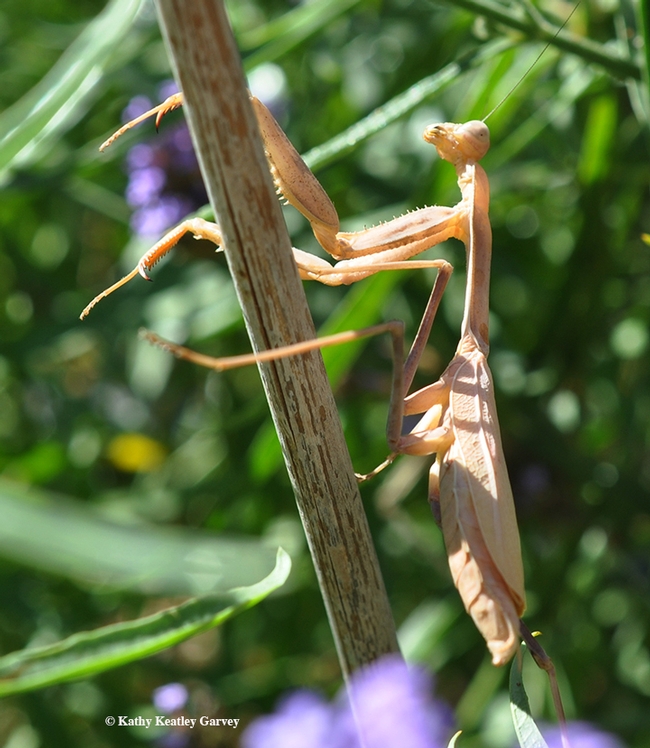
All gone and done. The praying mantis is finished with her meal. (Photo by Kathy Keatley Garvey)
Welcome, Anise Swallowtail!
The Anise Swallowtail, Papilio zelicaon, fluttered into our pollinator garden and headed straight for the Verbena. Art Shapiro, distinguished...
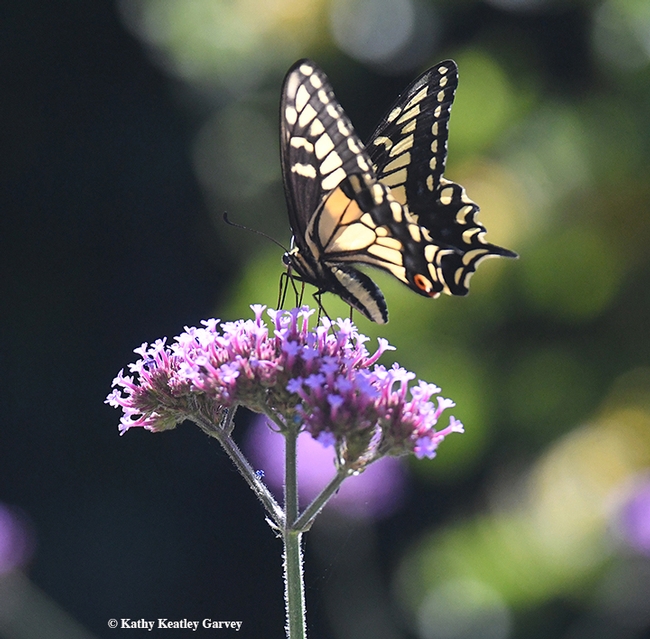
Anise Swallowtail Papilio zelicaon, nectaring on Verbena in Vacaville, Calif. (Photo by Kathy Keatley Garvey)
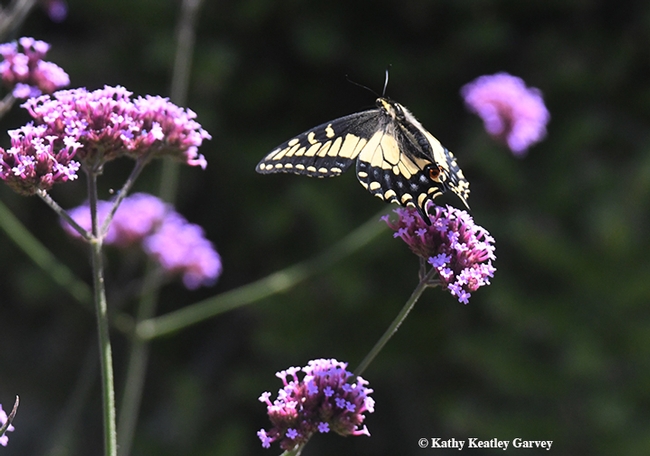
Butterfly ballet! Bees startled this Anise Swallowtail that was nectaring on Verbena. (Photo by Kathy Keatley Garvey)
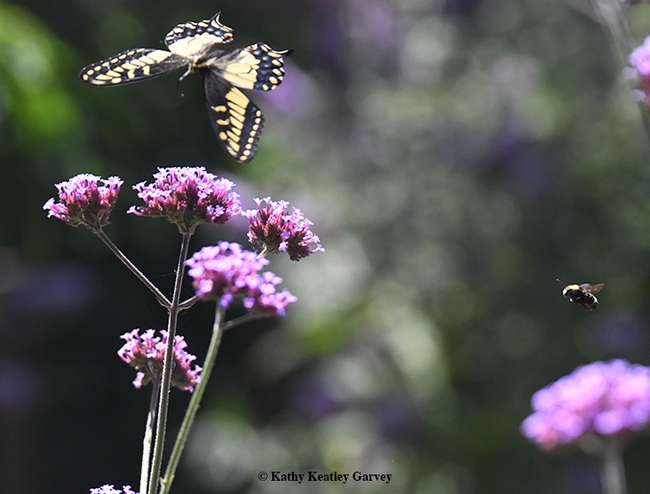
A yellow-faced bumble bee, Bombus vosnesenskii, heads for the same Verbena blossom occupied by the Anise Swallowtail. (Photo by Kathy Keatley Garvey)
They Hop and They Suck!
You've seen them. You've seen them hop. They're aptly named. Leafhoppers are tiny insects (family Cicadellidae) that suck nutrients from...
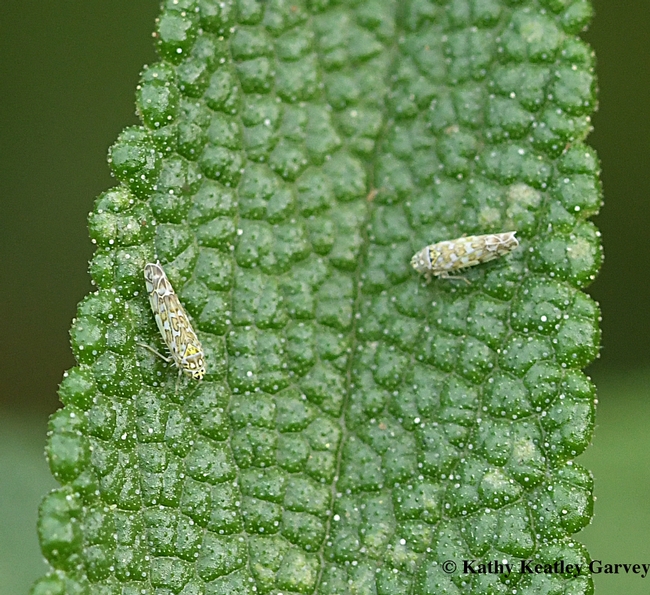
Two leafhoppers sharing a black sage leaf in Vacaville, Calif. They are Typhlocybinae leafhoppers, Eupteryx decemnotata, according to Robert Lord Zimlich of BugGuide.Net. (Photo by Kathy Keatley Garvey)
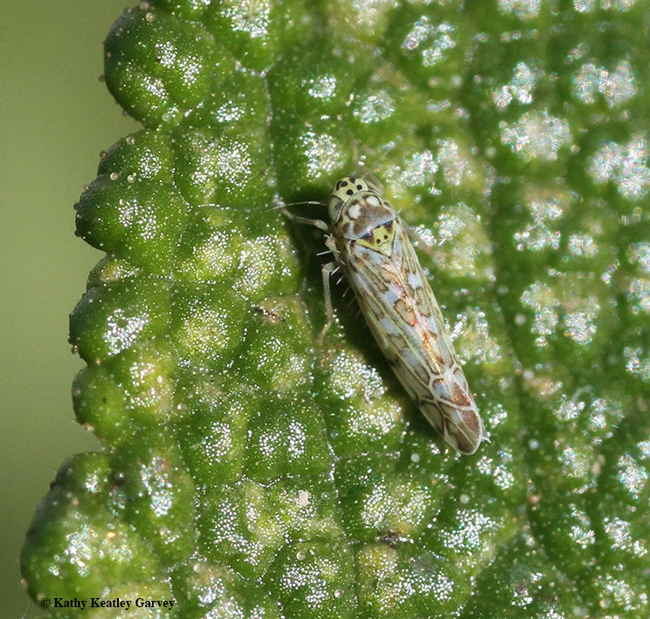
"Leafhoppers generally are varying shades of green, yellow, or brown, and often mottled," according to the UC Statewide Integrated Pest Management Program. This one is a Eupteryx decemnotata on black sage (Salvia mellifera) in Vacaville, Calif. (Photo by Kathy Keatley Garvey)
The Day the First Bumble Bee Arrived
When the monarchs return to southern California and central Mexico to overwinter, the residents rejoice. When the bumble bees emerge from their...

Yellow-faced bumble bee (Bombus vosnesenskii), foraging on verbena. (Photo by Kathy Keatley Garvey)
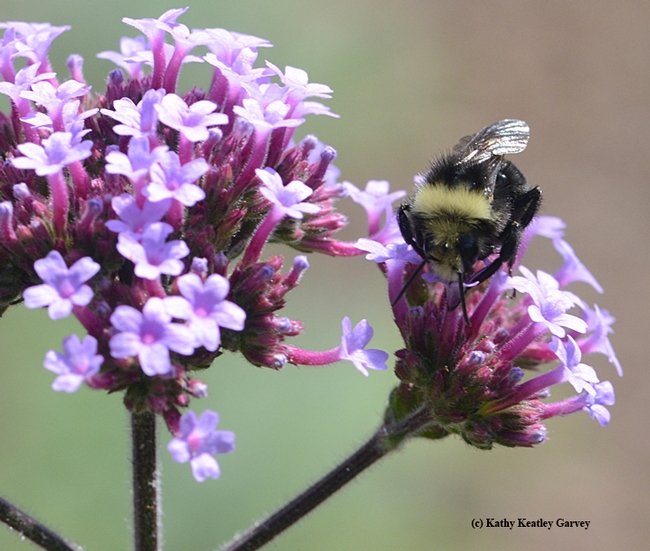
Its wings glistening, the yellow-faced bumble bee, Bombus vosnesenskii, sips nectar.(Photo by Kathy Keatley Garvey)
Lemony Goodness
My lemon verbena (Aloysia triphylla) shrub is planted near a window and has a very strong lemon scent when you brush by it or when the wind blows (here in Fairfield, which is most of the time.) If the window is open the lemon scent comes into the room.
The shrub is pruned to about 6 feet , I try to keep it to 5-6 feet tall and about 2 feet wide, if I did not keep it at the height it would grow to about 8 feet. In lemon verbena’s native country of South America, it can grow to 15 feet tall. If you let them get too tall and wide they tend to get very messy looking. This shrub is planted where it gets only the late afternoon sun, but the Sunset Western Garden Book says they need full sun.
They do like a lot of water and good drainage to keep them looking their best. I have not seen any pest on my shrub, but they can be bothered by whitefly and spider mites. Spraying with an insecticidal soap will help with that problem.
In the spring and early summer, it has small white flowers on the end of the branches. Even after the flowers fade the left-over flower inflorescences are interesting to look at. This shrub goes dormant in the winter, and that is when it gets it heavy pruning. I take it down to about 2 feet above the ground, knowing it will come back stronger the next year, so far this 8 year old shrub has not failed that test.
I bring some of the branches, with the flowers, into the house put them in a vase with other flowers if I have them. If not, I just use the lemon verbena stems in the vase helps to release the lemon fragrance into the room. They will last about a week this way.
This is a very easy plant to propagate. Doing it in summer with a soft wood cutting and putting into potting soil, should bring new starts in about 2 months.

Lemon verbena flowers. (photos by Betty Victor)

Lemon verbena plant.

